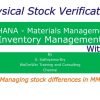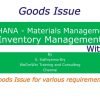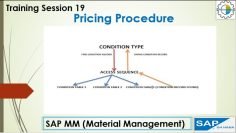This video explains how to manage the Material Master MRP1 View in SAP Materials Management. The key points discussed in the video are:
- MRP1 View Parameters: The video discusses various parameters like MRP group, ABC indicator, MRP type, reorder point, MRP controller, lot size procedure, rounding value, which are all in the MRP1 view. These parameters are crucial for planning and need to be maintained accurately to ensure optimal inventory levels and customer service.
- MRP Group: MRP group is used to group all the materials from an MRP point of view to assign special control parameters for the planning run. If the MRP group is not maintained, SAP will use the material type instead.
- ABC Indicator: The ABC indicator is a classification of the material based on parameters like unit price, usage quantity, criticality of availability, or usage value. This classification can be manually arrived and entered into the system or can be done with the SAP transaction itself.
- MRP Type: MRP type determines how the material has to be planned. Depending on the selection parameter, the system will plan the material. For example, if the reorder point MRP type is selected, the system will perform reorder planning.
- Planning Time Fence: The planning time fence defines a range within which material requirement planning should not create or delete any procurement proposal. This is used along with some MRP types which are called the Firm MRP types.
- MRP Controller: The MRP controller is a person who is responsible for the material which is planned in the plant. The MRP controller should be based on the position or responsibility rather than just an individual person’s name.
- Lot Size: Lot size is used to define the number of proposals to be created and how much quantity to be created for each proposal. Determining the right lot size is important to optimize inventory and ensure a good service level.
- Assembly Scrap: Assembly scrap is used when you expect some percentage of scrap during production. The system will add this assembly scrap percentage to the total quantity and then propose it.
- Rounding Value: The rounding value is used when the supplier provides materials in specific quantities. The system will round off the proposed quantity to the nearest rounding value.



























































